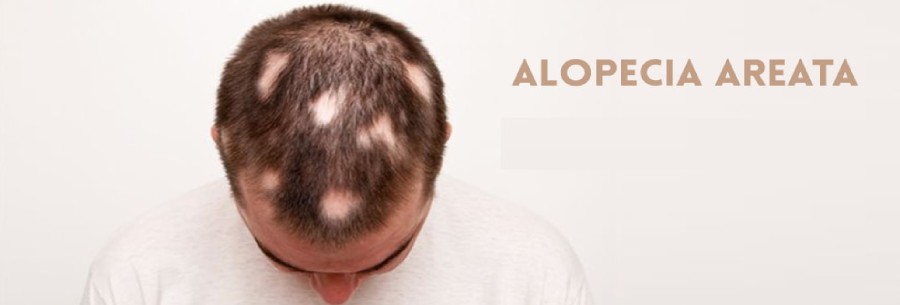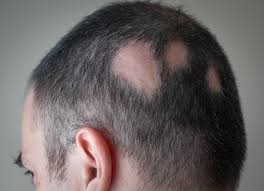Alopecia Areata
Our Services
Book an Appointment

Alopecia Areata Treatment in Navi Mumbai
Alopecia Areata is an autoimmune disorder causing hair loss in patches. The immune system attacks hair follicles, leading to sudden hair loss on the scalp and other body areas. While the exact cause is unknown, treatments aim to stimulate hair growth and manage symptoms.
Alopecia Areata treatment at Skin Soul Clinic Nerul in Navi Mumbai, offers advanced treatment. Combining state-of-the-art technology with personalized care. Their expert dermatologists provide tailored therapies, including topical and injectable medications, to stimulate hair regrowth and manage symptoms effectively. With a focus on patient well-being, Skin Soul ensures comprehensive care in a supportive environment.

Alopecia Areata Specialist in Navi Mumbai
An Alopecia Areata specialist provides expert diagnosis and personalized treatment plans, utilizing advanced therapies to promote hair regrowth and manage symptoms, ensuring comprehensive and compassionate care for patients.
Dr. Sneh Thadani is a specialist in Alopecia Areata located at Skin Soul Clinic in Nerul, Navi Mumbai. She offers accurate diagnosis and customized treatment approach founded on application of contemporary therapies that aim at promoting hair regrowth and symptom control. Dr. Thadani is fully committed to offering an encompassing holistic patient care.

Alopecia Areata Treatment Cost in Navi Mumbai
The cost of having an injection treatment for Alopecia Areata at Skin Soul Clinic in Nerul, Navi Mumbai ranges from Rs 5000 to Rs 7000 per session with Dr. Sneh Thadani", said Dr. Sneh Thadani who is an expert in treating Alopecia Areata , as she personalized treatment plans depending on individual requirements hence offering high quality care alongside empathy. This advanced approach incorporates undertaking corticosteroid injections directly onto the problematic parts of the scalp thereby stimulating hair growth and diminishing irritation.
Causes of Alopecia Areata
Autoimmune Reaction: The body's immune system mistakenly attacks hair follicles, leading to hair loss.
Genetic Factors: A family history of Alopecia Areata can increase the risk of developing the condition.
Environmental Triggers : Stress, viral infections, or other environmental factors may trigger the onset of Alopecia Areata.
Hormonal Imbalances: Hormonal changes or imbalances can contribute to the development of Alopecia Areata.
Other Autoimmune Conditions: Having other autoimmune disorders, such as thyroid disease or vitiligo, increases the likelihood of developing Alopecia Areata.
Symptoms of Alopecia Areata
Here are 5 Symptoms or Indication of Alopecia Areata:
Patchy Hair Loss: Circular areas of missing hair on scalp or body, typically painless but noticeable, often varying in size.
Smooth, Bald Patches: Hairless skin without inflammation or scaling, creating distinct, round or oval patches of baldness.
Exclamation Mark Hairs: Short, tapered hairs around bald patches, indicating active hair loss and potential regrowth.
Nail Changes: Fingernail or toenail irregularities like pitting, ridges, or fragility, sometimes accompanying Alopecia Areata.
Sudden Onset: Rapid hair loss within weeks, startling individuals due to the abruptness and unpredictability of the condition.
Treatment Plan for Alopecia Areata
Topical Treatments: Application of corticosteroid creams or solutions directly to affected areas to reduce inflammation and stimulate hair growth.
Intralesional Corticosteroid Injections: Direct injections of corticosteroids into bald patches to suppress immune response and promote hair regrowth.
Oral Medications: Systemic corticosteroids or other oral medications to manage widespread or severe cases of Alopecia Areata.
Immunotherapy: Treatment to modulate the immune system's response, such as topical immunotherapy using diphencyprone (DPCP) or squaric acid dibutylester (SADBE).
Light Therapy: Exposure to ultraviolet (UV) light, either through natural sunlight or specialized devices, to help stimulate hair regrowth.
Hair Transplantation: Surgical procedure to transplant healthy hair follicles from other areas of the body to bald patches, suitable for stable, localized cases.
Review Form

Skin Soul is a patient-centric Dermatologic Centre of Excellence that has been conceived and developed by Dr. Sneh Thadani. After completing her DNB in Dermatology and practicing for over nine years
- Home |
- About Us |
- Treatment |
- Contact Us |
- Sitemap
First Floor, Sai Paradise shop no 1, Plot 21, opp. Prashant Corner, Sector 4, Navi Mumbai, Maharashtra 400706
Mobile No: +91 9321584678
+91 9619452648
+91 7045932429
Email: drsneh.skinsoul@gmail.com
Website: www.skinsoul.in


